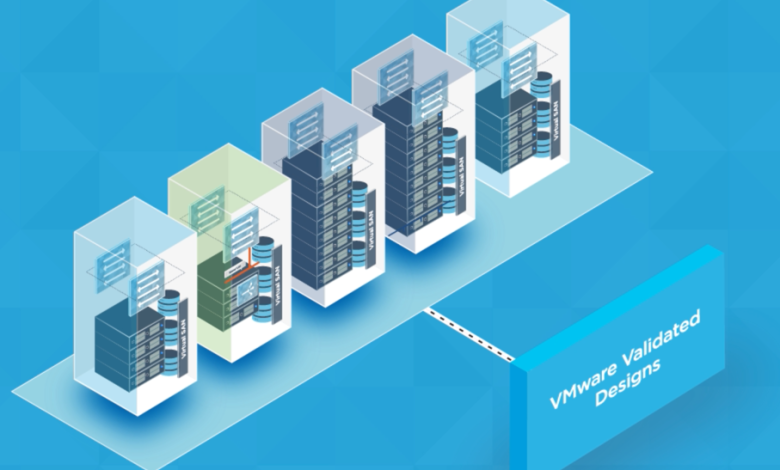12 Functions of VMware To Secure Cloud Migration at Your Fingertips

In recent years, cloud computing has emerged as a game-changer for businesses of all sizes, offering unparalleled scalability, flexibility, and cost efficiency. VMware, a leading virtualization and cloud computing solutions provider, has been at the forefront of enabling seamless migration to the cloud.
Its suite of solutions offers myriad functions that empower businesses to make the transition securely and efficiently.
Let’s explore the twelve key functions of VMware solutions that enable organizations to move to the cloud confidently:
Secure Hybrid Cloud Infrastructure:
VMware solutions allow businesses to create a secure hybrid cloud infrastructure that combines the best of both worlds – on-premises and cloud environments. This function enables seamless integration of existing on-premises infrastructure with public and private clouds, providing a unified platform for managing applications, data, and services.
Organizations can strike the perfect balance between security and efficiency by maintaining control over sensitive data on-premises while utilizing the cloud for scalability and agility.
Advanced Networking and Security:
One of the major concerns while moving to the cloud is the security of data and applications. VMware solutions have advanced networking and security features that robustly protect against cyber threats and unauthorized access. These solutions enable micro-segmentation, which divides the network into smaller segments, reducing the attack surface and preventing lateral movement of threats.
Disaster Recovery and Business Continuity:
Data loss and downtime can be catastrophic for any organization. VMware solutions offer robust disaster recovery and business continuity capabilities, allowing businesses to replicate their critical workloads to the cloud or other remote data centers. This ensures data redundancy and the ability to recover operations in case of unforeseen events rapidly.
Unified Cloud Management:
Managing a multi-cloud environment can be complex and time-consuming. VMware’s unified cloud management function brings simplicity to this process. It provides a centralized dashboard that allows businesses to monitor and manage their cloud resources, applications, and workloads from a single interface. This not only saves time but also enhances operational efficiency.
Scalability and Elasticity:
VMware solutions empower organizations to scale their IT infrastructure seamlessly based on demand. Cloud resources can be easily added or removed, allowing businesses to adapt to changing workloads without incurring unnecessary costs. This elasticity ensures optimal resource utilization while maintaining high-performance levels.
Application Modernization and Development:
To fully leverage the cloud’s potential, businesses must modernize their applications and adopt cloud-native development practices. VMware solutions provide the necessary tools and capabilities to re-architect applications for the cloud and adopt a DevOps approach. This enables faster deployment, enhanced collaboration, and continuous integration and delivery.
Compliance and Governance:
Adhering to industry regulations and maintaining governance is critical for businesses, especially in highly regulated sectors like finance and healthcare. VMware solutions offer features that assist businesses in maintaining compliance with relevant regulations and implementing governance policies effectively. This ensures that data privacy and security standards are met even in a cloud environment.
Data Encryption and Privacy:
Data security is a top concern when moving sensitive information to the cloud. VMware solutions offer robust data encryption capabilities, ensuring that data remains protected throughout its lifecycle, whether at rest or in transit. This encryption helps prevent unauthorized access and ensures data privacy, mitigating the risk of data breaches.
What are the Key Features of the SAS?
Identity and Access Management (IAM):
Controlling access to cloud resources is crucial for maintaining a secure environment. VMware solutions provide comprehensive identity and access management features, allowing businesses to define granular access controls for users and resources. Multi-factor authentication (MFA) can also be implemented, adding an extra layer of security to user accounts.
Threat Detection and Response:
VMware solutions incorporate advanced threat detection and response mechanisms to combat the evolving threat landscape. These solutions use machine learning and artificial intelligence algorithms to detect suspicious activities and potential security breaches in real time. Organizations can proactively protect their cloud infrastructure and data by promptly identifying and responding to threats.
Data Backup and Recovery:
In addition to disaster recovery capabilities, VMware solutions offer robust data backup and recovery mechanisms. Regular backups of cloud-based data are essential to prevent data loss due to accidental deletion, system failures, or malicious activities. VMware’s backup solutions ensure that critical data is continuously backed up and can be easily restored.
Network Segmentation and Firewalls:
Network segmentation is a fundamental security practice that isolates different parts of the network to prevent unauthorized access and lateral movement of threats. VMware solutions enable businesses to implement network segmentation easily, ensuring that each application and workload operates within its secure network zone. Integrated firewalls further enhance security by controlling traffic between these segments.
Read Also: Red Hat Vs. Ubuntu Server: The Never-Ending Battle for the Top Spot
Conclusion:
VMware solutions enable organizations to move to the cloud securely. From building a hybrid cloud infrastructure to ensuring advanced networking and security, VMware virtualization offers a comprehensive suite of functions that address the various challenges of cloud migration.
By leveraging these solutions, businesses can confidently embrace the cloud, unlocking new opportunities for growth and innovation while maintaining the highest levels of security and control.








